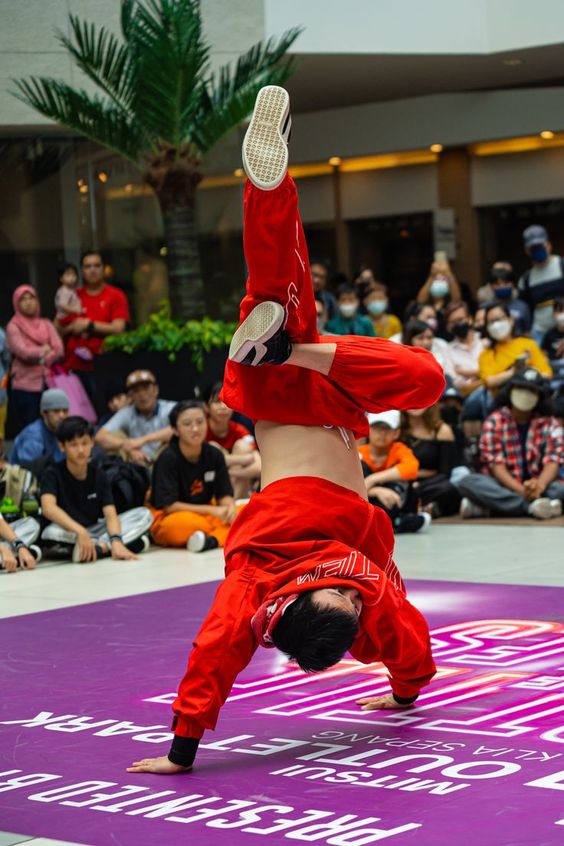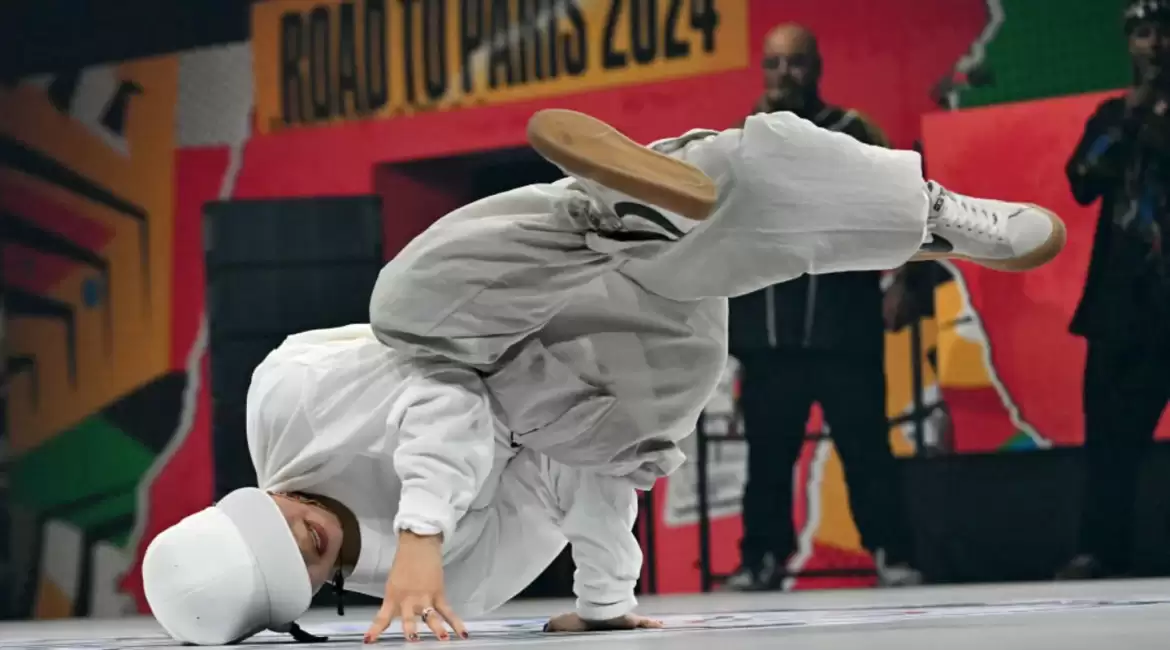Breakdancing, also known as breaking or b-boying, is a unique and dynamic form of dance that blends athletic and acrobatic movements with the rhythmic and expressive elements of street dance styles such as popping and locking. Originating in the vibrant streets of New York City during the 1970s, breakdancing has evolved into a global phenomenon, celebrated for its creativity, athleticism, and cultural significance.

Origins and Evolution of Breakdancing
Historical Roots
Breakdancing emerged from the Bronx, New York City, as a component of the larger hip-hop culture that included DJing, graffiti art, and MCing. During the 1970s, street gangs began to embrace freeform dancing as a means of expression and community building. The earliest breakers, or b-boys and b-girls, utilized their bodies as percussive instruments, moving to the beats of funk, soul, and hip-hop music.
DJ Kool Herc and the Birth of Breaks
DJ Kool Herc, a Jamaican-American DJ, is often credited with pioneering the breakbeat technique that became fundamental to breakdancing. By isolating and extending the “breaks” (the percussion-heavy sections of songs), Herc created a rhythmic foundation that energized dancers and allowed for the development of more complex and acrobatic moves. This innovation laid the groundwork for the explosive growth of breakdancing as an art form.
Michael Jackson and Mainstream Popularity
The genre reached new heights in the 1980s, in part due to the influence of pop icon Michael Jackson. His iconic moonwalk and other breakdance-inspired moves captivated audiences worldwide, bringing breakdancing into the mainstream. This exposure led to a surge in popularity, with breakdancers appearing in music videos, commercials, and films.
The Core Elements of Breakdancing
Breakdancing is characterized by its diverse and intricate movements, which can be categorized into several core elements:
Top Rock
Top rock refers to the upright, footwork-based movements that dancers perform while standing. These steps serve as the introduction to a breakdance routine, showcasing the dancer’s style, rhythm, and musicality. Top rock is often fluid and improvisational, allowing dancers to express their individuality and set the stage for more dynamic moves.
Down Rock
Down rock, or floor work, involves movements performed on the ground. Breakers use their hands and feet to support their bodies while executing complex patterns and transitions. The six-step is a foundational down rock move, where dancers move in a circular pattern, shifting their weight and maintaining balance with their hands.
Power Moves
Power moves are the acrobatic and physically demanding maneuvers that often define breakdancing. These moves, influenced by gymnastics and martial arts, emphasize strength, momentum, and control. Common power moves include the windmill, head spin, backspin, and swipe. Mastery of power moves requires rigorous training and exceptional physical fitness.
Freezes
Freezes are poses where the dancer momentarily suspends movement, creating a striking visual effect. These stationary positions often highlight the dancer’s strength, balance, and flexibility. Popular freezes include the handstand, baby freeze, and air chair. Effective freezes punctuate a breakdance routine, adding dramatic flair and showcasing the dancer’s technical prowess.
Transitions and Drops
Transitions and drops connect the various elements of a breakdance routine, allowing dancers to seamlessly shift from top rock to down rock, power moves, and freezes. Drops involve sudden and often dramatic movements from standing to the ground, adding excitement and unpredictability to the performance.

The Cultural Significance of Breakdancing
Breakdancing is more than just a dance style; it is a cultural movement that embodies the spirit of creativity, resilience, and community. The breakdance culture, often referred to as the b-boy or b-girl culture, has had a profound impact on society, influencing fashion, music, and social dynamics.
Community and Collaboration
Breakdancing has always been a collaborative and community-oriented art form. Crews, or groups of breakdancers, often form to practice, compete, and support each other. These crews foster a sense of belonging and mutual respect, encouraging members to push their limits and innovate new moves.
Competitions and Battles
Breakdancing battles are a central aspect of the culture, where dancers face off in head-to-head competitions. These battles are not just about physical prowess but also about creativity, musicality, and style. Competitors are judged on their ability to adapt to the music, execute complex moves, and engage the audience. Prominent competitions, such as the UK B-Boy Championships and the Red Bull BC One, attract top talent from around the world and showcase the highest levels of skill and artistry.
Global Influence
Since its inception, breakdancing has transcended geographical and cultural boundaries. It has become a global phenomenon, with vibrant scenes in countries as diverse as Japan, France, South Korea, and Brazil. This international reach has enriched the art form, introducing new styles, techniques, and influences while maintaining the core principles of creativity and self-expression.
Training and Physical Conditioning
To excel in breakdancing, dancers must develop a high level of physical fitness, strength, and flexibility. The demands of the art form require rigorous training and dedication.
Strength and Conditioning
Breakdancers often incorporate strength training into their routines to build the necessary muscle mass and endurance. Exercises such as push-ups, sit-ups, pull-ups, and weightlifting help dancers develop the upper body strength needed for power moves and freezes.
Flexibility and Mobility
Flexibility is crucial for executing fluid and dynamic movements. Breakdancers typically engage in regular stretching and mobility exercises to enhance their range of motion and prevent injuries. Yoga and Pilates are popular complementary practices that improve flexibility, balance, and core strength.
Endurance and Stamina
Breakdancing routines can be physically demanding and require sustained bursts of energy. Cardiovascular exercises, such as running, swimming, and high-intensity interval training (HIIT), help dancers build endurance and maintain peak performance throughout their routines.
Technique and Practice
Mastering the technical aspects of breakdancing requires consistent practice and attention to detail. Dancers often spend hours perfecting individual moves, transitions, and combinations. Training sessions may include drilling specific techniques, experimenting with new moves, and refining choreography.
The Future of Breakdancing
As breakdancing continues to evolve, it remains at the forefront of contemporary dance and popular culture. The inclusion of breakdancing in the 2024 Olympic Games marks a significant milestone, highlighting its recognition as a legitimate and respected sport. This development has the potential to elevate the art form to new heights, attracting a broader audience and inspiring the next generation of dancers.
Innovation and Creativity
The future of breakdancing lies in the hands of innovative and creative dancers who push the boundaries of what is possible. As new styles and influences emerge, breakdancers will continue to experiment and incorporate diverse elements into their routines, ensuring that the art form remains fresh and exciting.
Technology and Digital Platforms
The rise of digital platforms and social media has provided breakdancers with new avenues to share their work, connect with audiences, and collaborate with other artists. Online tutorials, live streams, and virtual battles have democratized access to breakdancing, making it more accessible to aspiring dancers worldwide.
Cultural Exchange and Global Community
The global breakdancing community is characterized by a spirit of cultural exchange and mutual respect. As dancers from different backgrounds come together to share their skills and experiences, they enrich the art form and foster a sense of unity and understanding. This cross-cultural dialogue will continue to shape the future of breakdancing, promoting diversity and inclusivity.
Conclusion
Breakdancing is a vibrant and dynamic dance form that embodies the principles of creativity, athleticism, and cultural expression. From its humble beginnings in the streets of New York City to its recognition on the global stage, breakdancing has evolved into a powerful cultural movement that inspires and unites people from all walks of life.
The principles of breakdancing—top rock, down rock, power moves, freezes, and transitions—form the foundation of this art form, allowing dancers to showcase their individuality and technical prowess. As breakdancing continues to grow and evolve, it remains a testament to the power of creativity and the enduring spirit of the hip-hop culture.
Whether performed in competitive battles, community events, or on the Olympic stage, breakdancing continues to captivate audiences and inspire the next generation of dancers. Its rich history, cultural significance, and boundless potential ensure that breakdancing will remain a vital and influential force in the world of dance for years to come.


Leave a reply